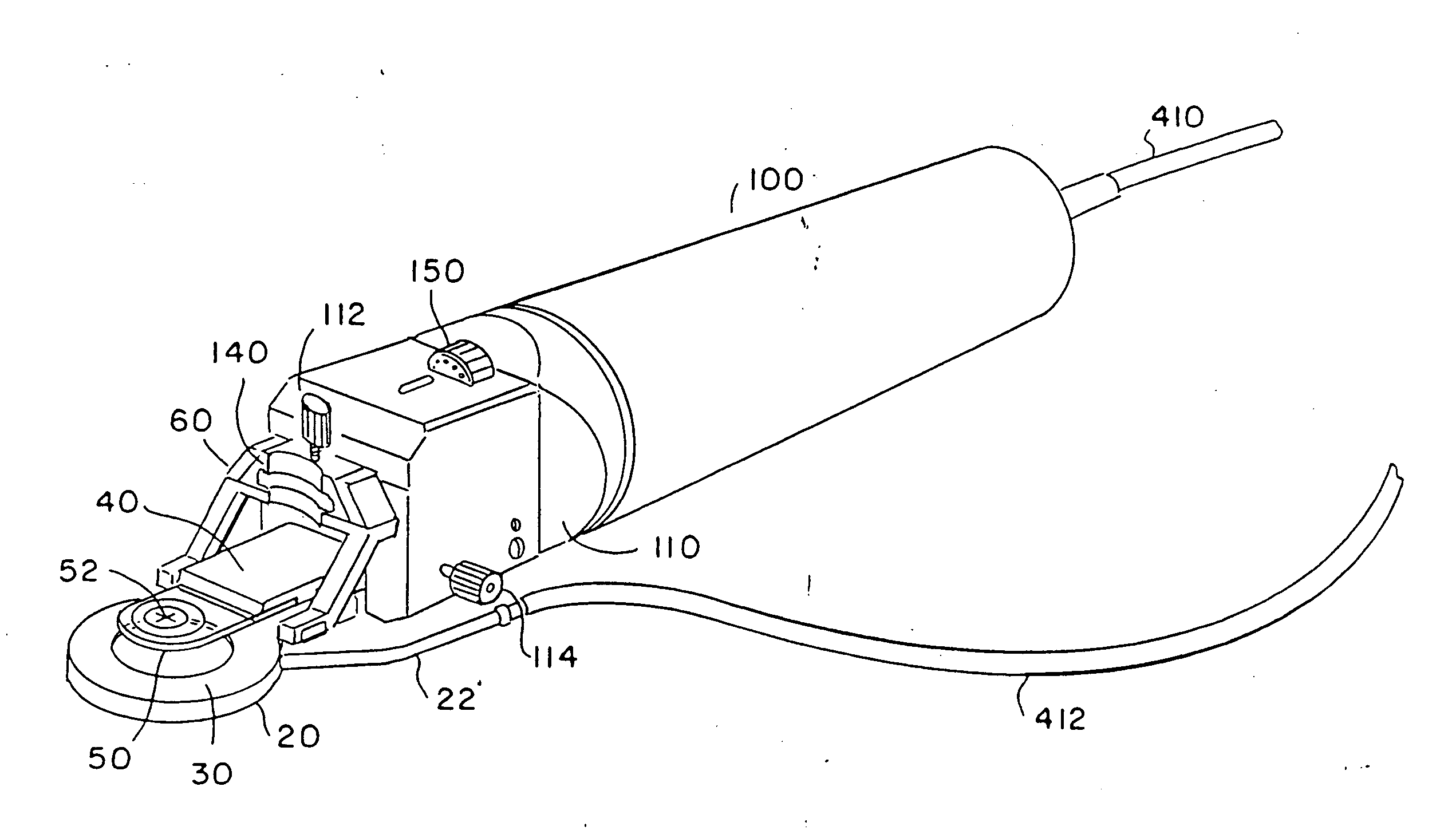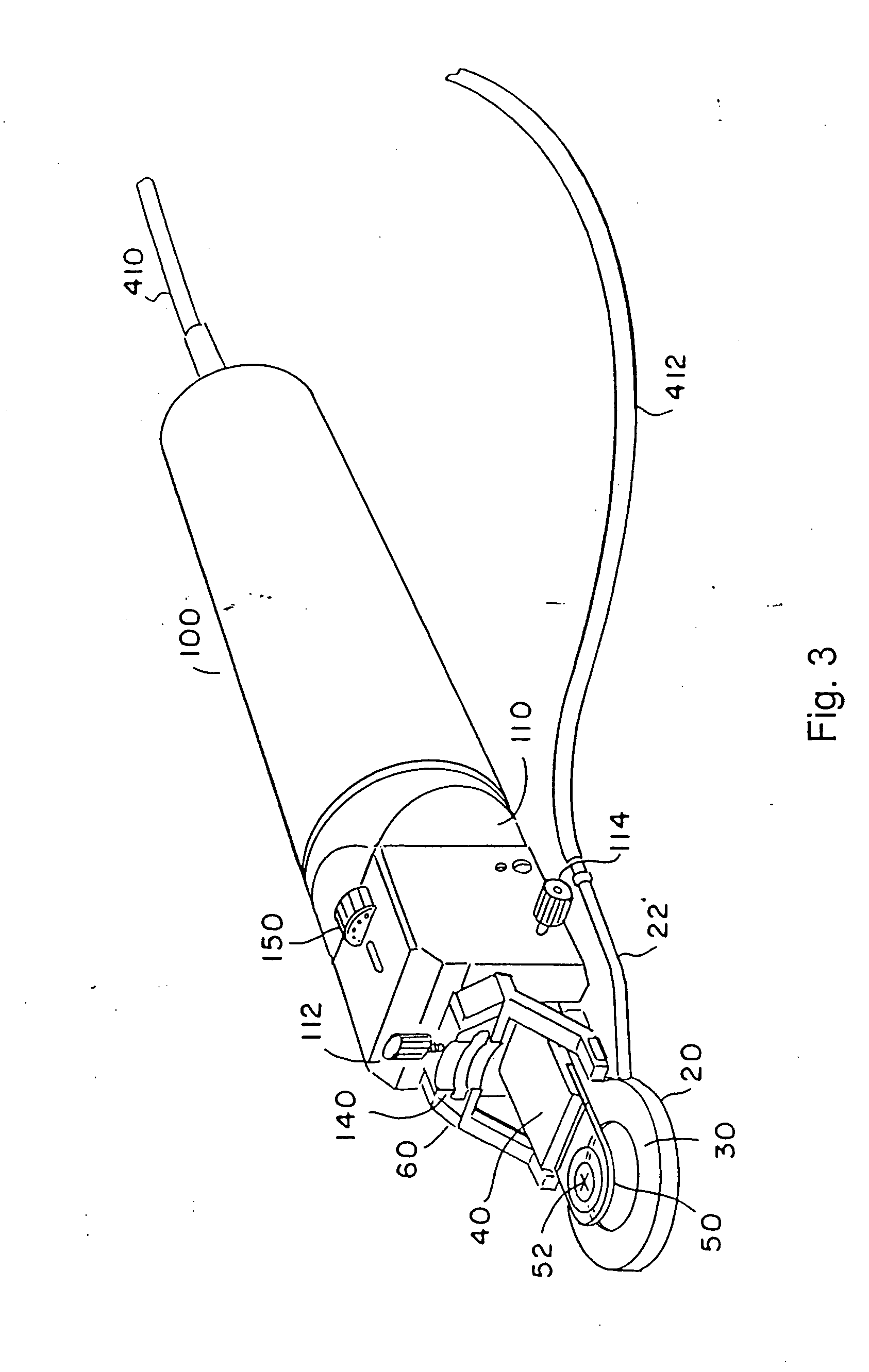Intracorneal lens placement method and apparatus
a lens placement and intracorneal technology, applied in the field of ophthalmologic surgery, can solve the problems of difficult surgery to accurately perform, unsatisfactory lenses for such vision correction, and risk of creating permanent visual aberrations for patients, so as to facilitate the retention of the lens, improve the amplitude of the lateral oscillation, and minimize the disturbance of the surgical setup
- Summary
- Abstract
- Description
- Claims
- Application Information
AI Technical Summary
Benefits of technology
Problems solved by technology
Method used
Image
Examples
first embodiment
A First Embodiment for a Pocket Keratome
[0132] In a further development the invention is a pocket keratome that will cut a pocket in the cornea into which a lens or other device can be inserted.
[0133] The pocket keratome has a blade support and guide member constructed as a unitary part to mount on a drive mechanism of the type described above that can drive it forward while reciprocating laterally. The term unitary part as used herein means that it is made from one piece of material, preferably stainless steel. In particular the blade support and guide member are made from one piece. The blade is mounted on the blade support for precise positioning with respect to the guide. Also a positioning ring as described above is provided.
[0134] In accordance with a major goal of a pocket keratome, the blade support and guide member is configured such that when assembled with the blade, it will enable a very precise and precisely controllable depth of cut in the cornea. The depth of cut is...
PUM
 Login to View More
Login to View More Abstract
Description
Claims
Application Information
 Login to View More
Login to View More - R&D
- Intellectual Property
- Life Sciences
- Materials
- Tech Scout
- Unparalleled Data Quality
- Higher Quality Content
- 60% Fewer Hallucinations
Browse by: Latest US Patents, China's latest patents, Technical Efficacy Thesaurus, Application Domain, Technology Topic, Popular Technical Reports.
© 2025 PatSnap. All rights reserved.Legal|Privacy policy|Modern Slavery Act Transparency Statement|Sitemap|About US| Contact US: help@patsnap.com



